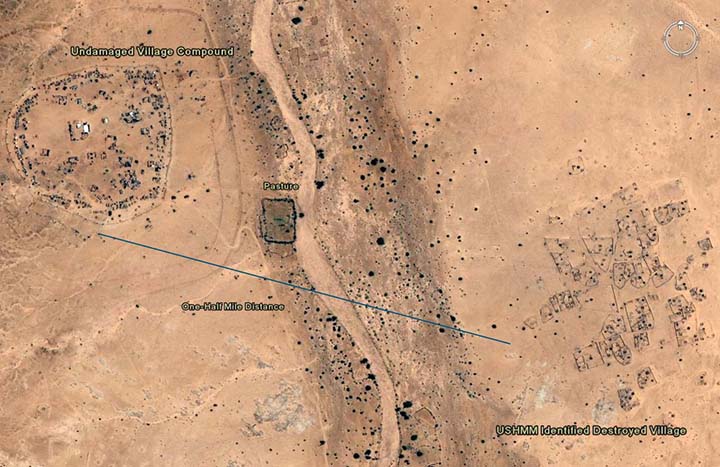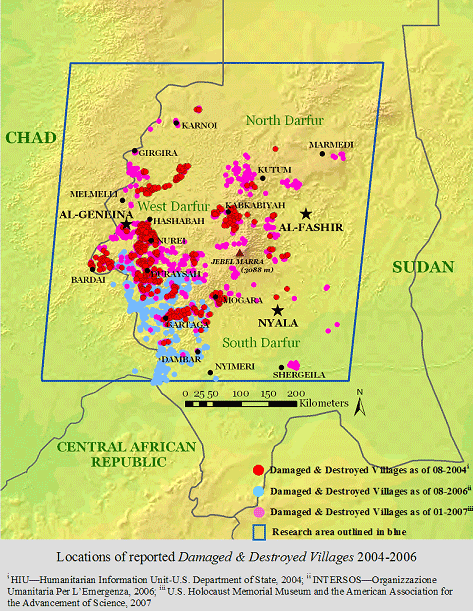Sudan Bibliography
Ben Kiernan, “Letting Sudan Get Away with Murder,” YaleGlobal, February 4, 2005.
Ben Kiernan, “Letting Sudan Get Away with Murder,” YaleGlobal, February 4, 2005.
Please visit the GlobalSecurity.org for more satellite images of destroyed villages in the Darfur region of Sudan.
An undamaged village in north-western Darfur one-half mile distance from a USHMM identified destroyed village.
Source for the location of genocide activities in Darfur provided by U. S. Holocaust Memorial Museum’s Crisis in Darfur on ©2007Google Earth™, damage summary as of January, 2007; image source ©2007Google Earth™, image acquisition date unknown.

Remote sensing applications can measure the health and vigor of vegetation and availability of water, as well as the speed of environmental recovery, and judge the stress humans and their activities place on the environment. Because agriculture and livestock grazing are historically dominant economic and subsistence activities in Darfur, abrupt and dramatic disruptions to these normal patterns of land use are directly related to changes in vegetation coverage as a result of genocidal activities since 2003.

The primary benefit of Geographic Information Systems (GIS) is the ability to interrelate spatially multiple types of information assembled from a range of sources. These data do not necessarily have to be visual. GIS “shape files” are helpful for interpolating and visualizing many other types of data, e.g. demographic data. Many research models rely on the ability to analyze and extract information from images by using a variety of computer-available research tools and then express these findings as part of a project with images in a variety of layers and scenes.